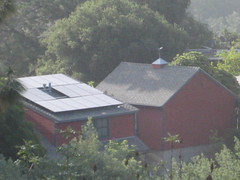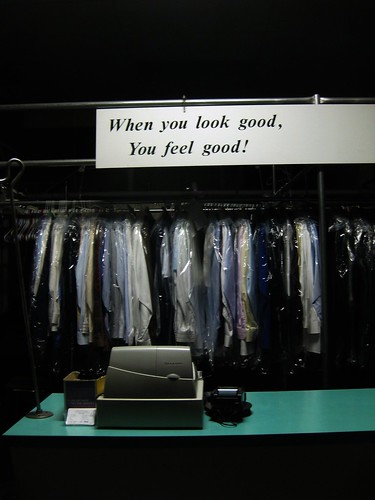
Some Real Costs of Going Green
When it comes to “going green” you’ve probably heard companies use the excuse of cost as a reason for not switching to a more environmentally-friendly method of doing business. This is true of individuals as well, but is this really just an excuse or is it the truth? Is the cost of going green too much for some businesses or individuals to afford?
Let’s take a look at a few examples of some real costs of going green:
 Solar Energy: We all know there are costs involved in turning your home or business into a solar-powered one. Of course these costs depend on what kind of solar power you are looking at installing. Are you looking for a solar water heater? Solar panels for your roof? Or are you looking at tapping into solar energy in a more passive way?
Solar Energy: We all know there are costs involved in turning your home or business into a solar-powered one. Of course these costs depend on what kind of solar power you are looking at installing. Are you looking for a solar water heater? Solar panels for your roof? Or are you looking at tapping into solar energy in a more passive way?
As of right now there is a 30% federal tax credit on solar energy systems including solar water heaters and solar panels. Many local utilities also provide incentive programs for individuals or businesses who install solar panels. In Los Angeles, the Department of Water & Power caps their residential incentive program at 75%, but per their website, most customers have received a payment of between 30-50% of their solar system costs.
So let’s say your solar panel installation costs were about $9-10 per Watt to install. With the average installation being approximately 3 Kilowatts (3000 Watts), you are looking at anywhere between $27,000-$30,000 minimum costs. With the 30% federal tax credit and let’s say only a 30% tax incentive from your local utility, that cost comes down to around $12,000. Factor in how much you will save on monthly/annual utility bills and installing solar panels becomes a lot less costly than originally thought.

If you want to take it to the next level you can buy things like this Deluxe Water Green House EcoKit™. For less than $60 you get water-saving tools such as a hand-held massaging showerhead (that uses less water without sacrificing water pressure), leak detection tablets (to help you find any leaks your toilet may have), a swivel aerator for your kitchen (to help save water while washing dishes), toilet tank bag (which can displace 0.8 gallons per flush) and more.
Of course if you are going to go all out, check out this EcoLogic™ toilet. It’ll run you about $300, while other eco-toilets can run anywhere between $100-$2000 a pop. However this one received the EPA’s WaterSense® label for using at least 20% less water than a standard 1.6-gallon toilet, while still maintaining strict flushing performance guidelines. (Which we all know is a good thing to maintain!)
Cutting down on chemicals/toxins: For an individual or family, this can be as simple as getting rid of your toxic cleaning supplies and buying eco-friendly cleaners. Or better yet, making your own cleaning supplies. Cutting down on our use of chemicals and toxins is a simple way to go green. However, for some businesses, it may not be so simple.
 Take for example a dry cleaner. Cost is a real concern for an independent dry cleaner who is looking to turn over a green leaf. Many dry cleaners still use perc machines to dry clean clothes (although I’m not sure why considering the EPA classifies perc as a Toxic Air Contaminant). If they need to purchase a brand new machine, it could cost them upwards of $175,000.
Take for example a dry cleaner. Cost is a real concern for an independent dry cleaner who is looking to turn over a green leaf. Many dry cleaners still use perc machines to dry clean clothes (although I’m not sure why considering the EPA classifies perc as a Toxic Air Contaminant). If they need to purchase a brand new machine, it could cost them upwards of $175,000.
However there are a few options…if a dry cleaner is currently using a hydrocarbon machine, they could potentially convert their machine over to a greener cleaning method, such as GreenEarth® Cleaning, without having to purchase a new machine. Other options include switching over to a CO2 dry cleaning machine or wet cleaning equipment. All are greener choices than using perc, so take a look at this chart and see which you would prefer be used on your clothes.
 Another example of someone cutting out chemicals is the Organic Farmer. You’d think it would be simple to switch from growing fruits/vegetables using toxins or pesticides and become an organic farmer, right? Well, did you know in order for the USDA to certify a farm as organic that farm has to submit a list of all substances applied to the land for the previous 3 years? That means it has to be free of all prohibited pesticides for 3 years running in order to be certified as an organic farm.
Another example of someone cutting out chemicals is the Organic Farmer. You’d think it would be simple to switch from growing fruits/vegetables using toxins or pesticides and become an organic farmer, right? Well, did you know in order for the USDA to certify a farm as organic that farm has to submit a list of all substances applied to the land for the previous 3 years? That means it has to be free of all prohibited pesticides for 3 years running in order to be certified as an organic farm.
I also came across this document from the California Certified Organic Farmers about the costs involved with and the importance of Handweeding in Organic Farming.
There are many more examples I could give you, but hopefully you get the idea. Going green doesn’t mean you need to spend a lot of money. Yes, there are costs involved as you move over to a more eco-friendly building or business. But if you do your homework and research out potential tax credits, your costs may soon balance out.
As a final note, I suggest checking out these smart conservation tips that can save you a lot without costing you a lot! And if you have been considering making energy-efficient changes to your home, please take a moment to figure out what changes best suit you and why now may be the right time to make those green changes.
15 Comments
-
-
Roberta
Nice overview of what’s really involved in switching over to green energy. Yup the initial costs can be daunting, but especially with tax credits and incentives( mostly on state and local level) these can be pared down AND more importantly, in the long run you save not only big $$$ but also the environment– definitely a win/win IMHO– great information here.
-
-
John Meshna
Living in a solar earth burmed house as I do is all the evidence I need to prove the viability of green technology. However it is costly to convert to it. Tax credits are good but you have to do all the work first and then wait for your money until you do your taxes. In the mean time, the plumber and vendors must be paid and most people don’t have the money. A short time ago some one might be able to take out a home equity loan for home improvements but the republicans made that method almost impossible for most people now. The cost of the technology needs to come down be it photovoltaics on the high end and solar hot water on the low end. Zoning laws need to be changed. Try erecting a wind generator in your neighborhood and see what happens.
I’ve been green since before people used the word but I’m also a realist. Costs need to come down. New financial models need to be invented and people’s attitudes reflected in their zoning laws need to get up to 21st century standards and all of this is very hard to do with the economy in the tank. It’s good to be positive but it’s good to admit the problems and attack them with strength at the same time. -
-
-
Gwenny
I suspect these dyi cheap strategies may be a surprise to some folks. But my family has been doing this for 30 years. Other things you can do include putting a bucket under the shower while it warms up and taking the water down to your garden and not flushing the toilet every time . .works better if you don’t share a bathroom. Also, we live in CA and we don’t turn on the furnace unless it get below freezing outside. Down side, you might wake up and it’s 42F in your room. But it’s livable. Especially when my three computers on 24/7 household had a $67 power bill for December.
-
Sarah
There is currently no recycling method for solar panels. Solar panels have a life span of approx. 25 years. They contain toxic chemicals that will lead to environmental degradation if landfilled. WHERE WILL ALL THE SOLAR PANELS GO???
Great in theory, but I would like to see this issue solved.
-
Maisha Lawrence
Hi, I just want to add one usefull cleaning tip here. For more effective dishwashing, add a few tablespoons of vinegar along with the dishwashing detergent when washing dishes. The vinegar cuts the grease and leaves dishes sparkling. Happy Cleaning )
-
-
Jayne Cederberg
My partner and i have now really been looking into solar power for about a twelve months and as a consequence we eventually made the actual decision primarily based upon the combination of the governtment incentive programs in addition to tremendously practical loans. We have been researching into photo voltaic energy for just about a year or so and as a result my spouse and i eventually made the decision primarily based upon the pairing of the governtment incentive plans together with unbelievably cost efficient loans. I genuinely could hardly comprehend just how reasonable the program turned out and as a consequence my partner and i already have ended up being a new solar power household for around a month and everything seem to be as though it all is truly working out very good. We can literally get pleasure from just how very much electrical energy my spouse and i aer saving every day in addition to it is in fact rather fantastic. I alway considered that solar was probably backed by a ton of hoopla nevertheless I can easily convey everyone the fact that the product is actually the bona fide deal. I wish my spouse and i had implemented this ages ago.
-
Peter Duquemin
Do you know of any programs, incentives, grants for those running an enterprise that effectively continuously eliminates or captures residual toxicity? How about tax incentives for a program that can save a good percentage of water used for outdoor gardening through advanced techniques and organic materials?


Stephanie
Often its a short term-long term analysis anyway. Over time, you can save much more – not to mention help preserve the planet long term. Don’t be short-sighted when it comes to energy costs. That will end up being a price we don’t want to pay….